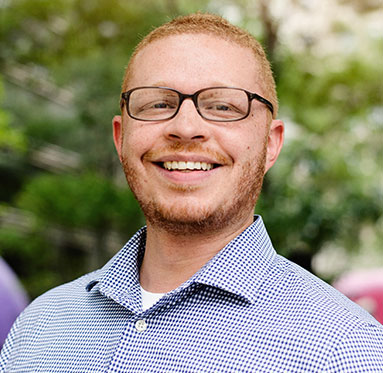April 21, 2022
People are hungry to see themselves.
As we continue to honor and celebrate people’s differences, history, stories, and identity, we can gain awareness of what we see and what we create. Pay attention to ads, commercials, TV and film and you’ll find an increasing rise in representation, which suggests creators are becoming more thoughtful about showing diverse people. As a graphic designer, I am keenly focused on showing a diversity of skin, ability, features, and sexual identities in my work. As you search for new models, actors or stock imagery, here are six things to keep in mind to help elevate the inclusive imagery in your designs.
1. Colors and textures
Skin tone and hair texture come in a vast array of shades and shapes. For example, Black and Hispanic skin come in many shades, from the fairest to the darkest complexions. A common misconception is that Hispanics are “tan” or “light brown” and black people are only “dark.” As a designer, I’d challenge you to do a critical study of the many shades of skin tones and incorporate more options into your next project.
Hair texture – especially for black women – also comes in a wide variety. There are countless styles and textures, including short cuts, Afro, relaxed, weaves and extensions. Think about different ways hair is styled and try to be more representative in your marketing work. Hispanic men and women have hair that ranges from straight or curly to spirals and kinky – and in many different colors. The idea here is to smash what stereotypes and widen our visuals representations. Ulta Beauty does a nice job of showcasing many tones and hair in this video.

2. Female forms
A couple of years ago, the cosmetic line Billie released a campaign that challenged the viewer to think of the perfect woman, then stylistically showed an array of women in every color, size, ability, age and lifestyle. This approach broke what we have come to know about the standard of beauty. While the comments section of this video ranged from positive to very negative, it was a bold and progressive move. Being a woman doesn’t stop at a certain size, age or vanity.

3. Differently Abled
As an avid video gamer, I have seen feature stories on social media showcasing differently-abled people playing video games professionally, and playing at a level far better than their opponents. Special attachments to limbs, breath-activated controls and other special gadgets are used to accomplish people’s favorite pastimes and inspire others to see what is possible. Apart from athletes and gamers, Hampton by Hilton released a commercial late-year showing a single father and his daughter with down syndrome creating memories over a hotel breakfast. While heartfelt and sentimental, it was also inspiring to see an underrepresented population as the main character. There is always room to show people differently-abled in your next creative project.
4. Formula of family
The definition of “family” has changed. If we think of the perfect family, we may think of a man, woman, one or two kids and a family pet. But I challenge you to think of the ABC show “Modern Family” for inspiration. Our experience of “family” differs based on our reality, but for representation, we don’t see much of that variety. For example, Healthcare.gov does a great job of showcasing “family” in several interpretations, highlighting inter-racial families and different races in their commercials. Moreover, the idea of family could extend to those who truly care for you – your adoptive parents, guardians, and very close friends. Think about this as you approach your next project.

5. Workforce stereotypes
Close your eyes for a moment. (OK, maybe do it hypothetically so you can finish reading this post.) If I asked you to find a stock image to represent a CEO in a piece of marketing collateral, what image comes to mind? Did you think of a woman? An Asian? A younger person? I challenge you to work hard to stay away from reinforcing workforce stereotypes in your designs and creative outputs. For example, think differently about how you might show a specific group of people, such as maintenance workers or restaurant line cooks. As you look for models or actors, keep in mind how representation matters, and how your choices can have meaningful positive impacts on the message’s recipient. You never know what child is watching and looking to get inspired about whom they want to be as they get older.
6. Sexual orientation
The LGBTQI+ community comes in every form of human. So, it’s hard to hear someone tell another “I didn’t know you were gay” or “you don’t look gay.” The challenge here is to not think too much of physical attributes or personality types, but find small ways to suggest someone is part of the LGBTQI+ community. It becomes cliché to show a woman in a blazer and tie or a man in clothing outside the heteronormative. If you immerse yourself in TV, movies and social media of LGBTQI+-focused media, you’ll see there is a wide array of Queer identities. Youtube’s “Participant” channel shows us queer experiences at different, personalities and visual styles, and sheds light on showing real people and less generic and overused stereotypes. Here’s an example I like a lot.

One way I like to expand my thinking is to use technology to explore people who live a life that’s dissimilar from mine. This leads to being exposed to content, ads and commercials that highlight diverse perspectives of people that I don’t experience in my everyday life.
In our journey to be creative and understanding, think of people less as separate and segregated (and stereotypical), and more as a blend and overlap of real everyday humans. This will allow our work to be more genuine and impactful, and to appeal to and impact our audiences in an authentic and meaningful way.


